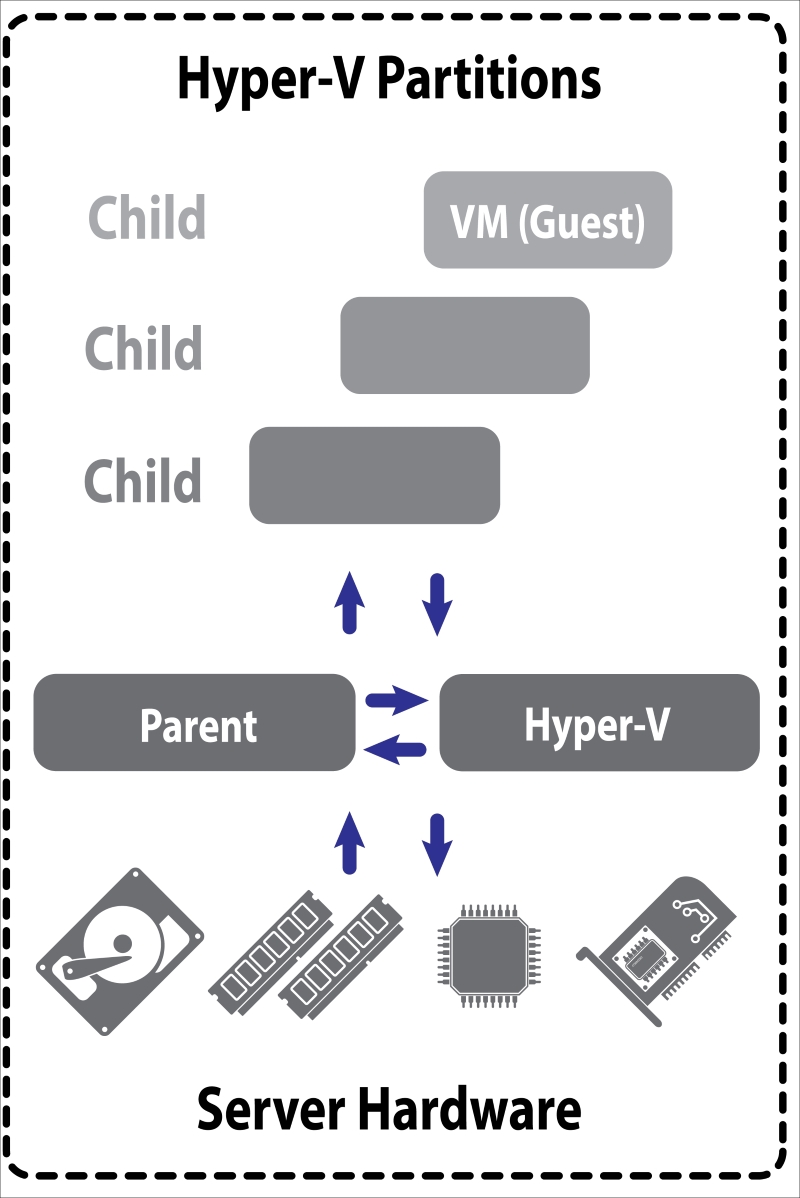Microsoft's Hyper-V hypervisor uses the concept of partitions. This is how it provides separation between the hypervisor required privileged access to the underlying hardware and the virtual machines that need to take advantage of that access. The following are the two types of partition:
The root partition, or parent partition, has the ability to provide direct access to the underlying hardware. The hypervisor runs in the root partition (Windows server). The root partition is equivalent to the kernel space.
Child partitions have lower privileges and run the virtual machines, and you can have many child partitions running on top of the parent partition. The virtual machines and applications run in the child partitions. Requests from virtual machines to physical devices are redirected through the hypervisor running in the parent or root partition to the physical devices. The child partition is analogous to the user space:




